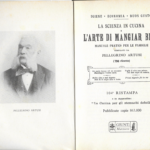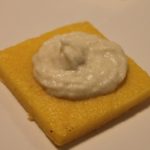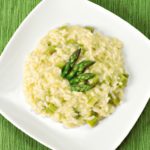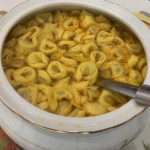SAVORY TARTE TATIN WITH TROPEA SPRING ONIONS
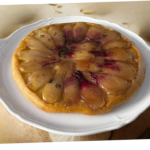
After centuries we are still thanking the Tatin sisters for the famous apple tarte we all know well and love. From this mistake that produced caramelised apples baked with no shortcrust pastry, added later on the top of the fruit when they realised their forgetfulness, incredible variations with vegetables emerged.
This modification of my previous recipe made with cherry tomatoes in another post valorises Tropea onion, a red onion extremely sweet and valuable, typical of the Calabrian village called Tropea (an incredible ancient spot which overlooks the Mediterranean sea).
Prep Time: 30 minutes | Cooking Time: 45 mins | Yields: it serves 8.
Ingredients
For the savory shortcrust pastry (of course, you can buy a shortcrust)
- 250 g (2 cups) gluten-free flour
- 40 g (1,4 oz) Parmigiano Reggiano, grated
- 140 g (5 oz) unsalted butter, very cold
- 2 medium eggs
- 6 thyme sprigs
- salt and pepper to taste
For the filling
- 900 g (2 lb) red (Tropea) spring onions, cleaned and cut into 2 halves
- 20 g (0,7 oz) white sugar
- 1 clove garlic
- 4- 5 thyme sprigs
- salt and pepper to taste
Instructions
The savory shortcrust pastry
In a food processor, add flour and cold butter into small piecesand blend for a few moments until the butter is reduced to very fine crumbs.
Add the grated cheese, egg, thyme, salt and pepper and blend again until all the ingredients are mixed together.
Turn the mixture over on the work surface and knead quickly until the mixture is smooth and homogeneous. Form a ball with the dough and, using a rolling pin, roll it out between two sheets of parchment paper. Once you have created a circle of about 30 cm, place it on a baking sheet and store in the refrigerator to firm.
The filling
Take a cake tin or pan suitable for baking in the oven and cooking on the stovetop with a diameter of 26 cm and add a little extra virgin olive oil to the bottom, a clove of garlic, and thyme leaves. On medium heat on the stove top, sauté and brown the garlic then remove it. Arrange the onions, middles uppermost, around the edge of the pan and then fill in the center with the remaining onions. It is important to pack them as atightly as possible – press them down with your hands as you go. Add sugar, salt and pepper then cook for 20 minutes and then turn off the heat.
Assemble and bake
Take the salted pastry, pierce the surface with the tines of a fork (or with a toothpick) and place it on the onions treading the outer edges towards the inside of the pan as if to embrace them. You can help yourself in this operation with a spatula.
Bake the tarte tatin in a preheated static oven at 175 degrees Celsius for about 35 minutes.
Remove from the oven, wait 10 minutes so that the juice of the tomatoes is absorbed by the pastry and turn it upside down on a serving plate. Add some toasted pine nuts on the surface, a few fresh thyme leaves and serve your slice of tasty salted tarte tatin with Tropea onions!
